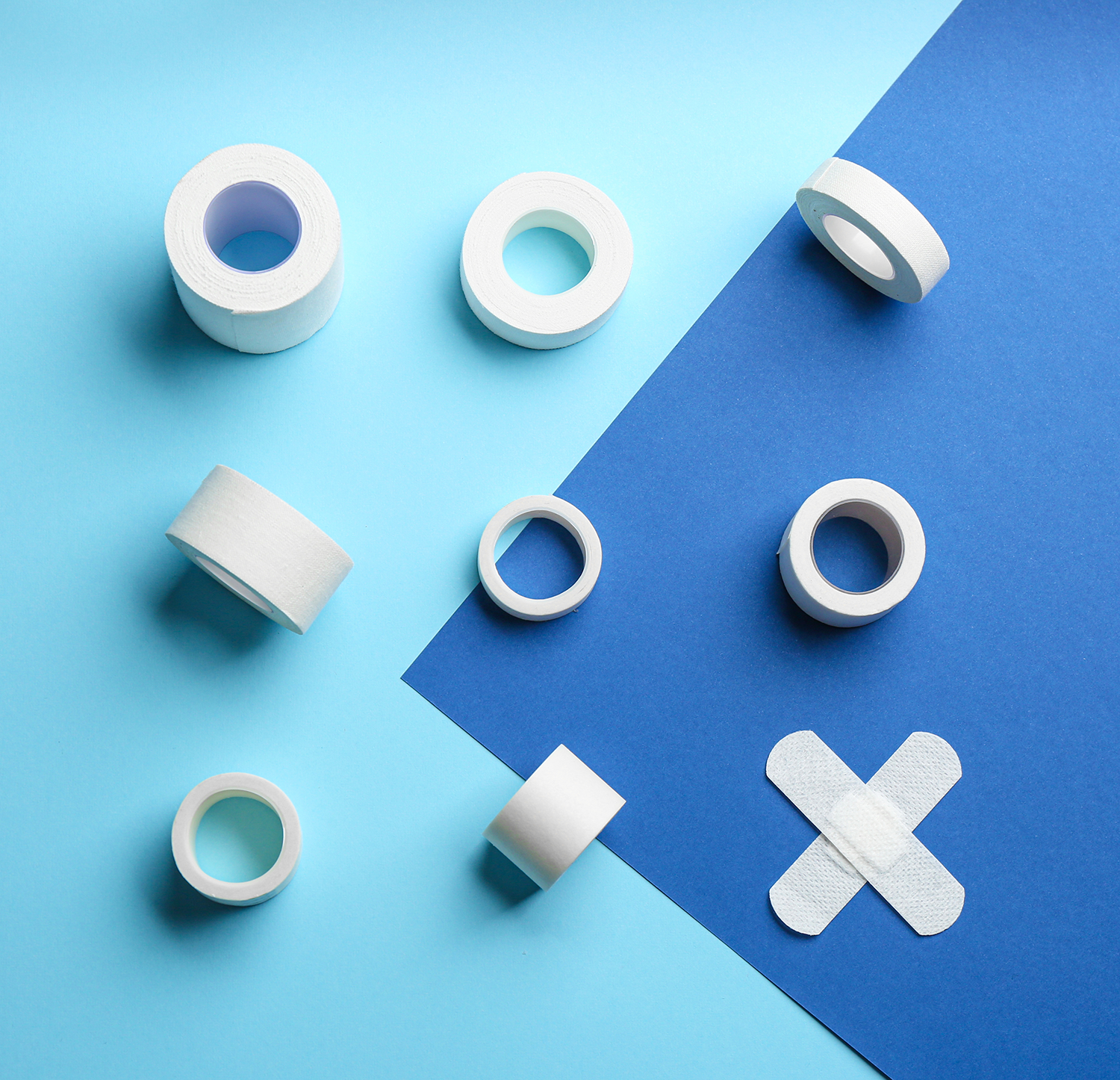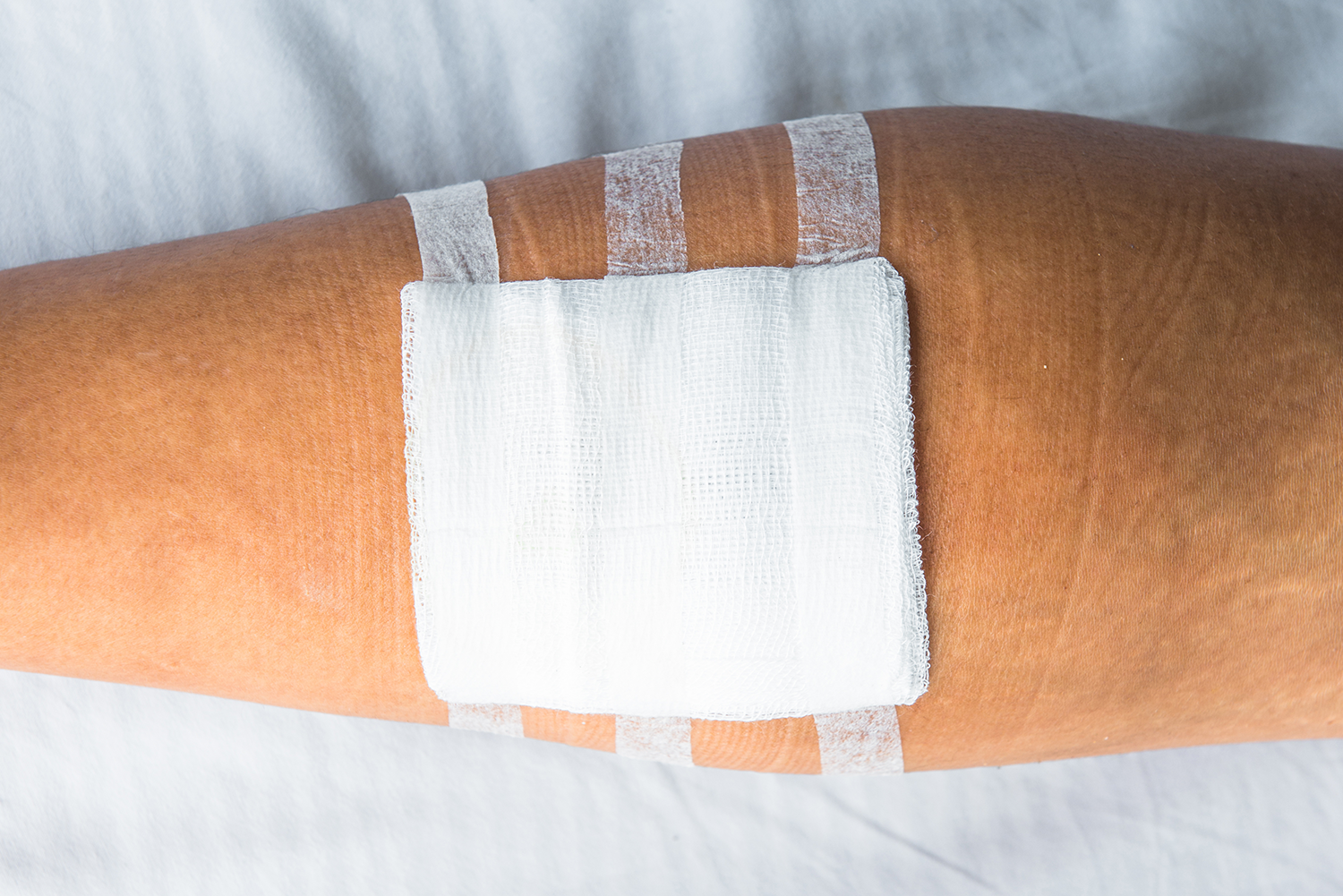
Summary:
This blog explores a variety of medical tapes and their best uses in wound care. Choosing the right tape is essential for wound security, comfort, and healing, considering factors like skin sensitivity, flexibility, and moisture resistance. Different tapes serve specific needs: hypoallergenic for sensitive skin, cloth for heavy dressings, elastic for movement, clear adhesive for visibility, foam for cushioning, non-adhesive for wrapping, paper for breathability, silk for strength, and waterproof for wet conditions. Selecting the right tape improves wound care and patient comfort.
Understanding Medical Tapes: Types and Best Uses for Wound Care
Medical tapes serve as an indispensable tool in wound management and patient care. The primary role of medical tapes in healthcare is to secure wound dressings effectively, protect injuries from contamination, support healing, and attach medical devices.
Selecting the right medical tape is important for wound security and patient comfort, as the wrong choice can lead to skin irritation, allergic reactions, or compromised dressing adherence. Picking the appropriate tape requires finding a balance in the product's adhesion strength, flexibility, and breathability. Understanding medical tape uses in wound care helps providers and caregivers make informed decisions for optimal patient outcomes.
In this blog, we’ll explore the different types of medical tapes and their best applications in securing wound dressings effectively.
The Role of Medical Tapes in Patient Care
In wound care management, medical tape plays a pivotal role in securing secondary dressings, preventing bacterial contamination, and supporting proper healing. Flexible medical tape options allow for better adaptability to different body areas, enhancing security. Selecting the appropriate tape improves patient comfort and overall wound care outcomes.
Additionally, medical tapes and adhesives are used to increase patient safety while securing medical devices and tubing. They keep IV lines and feeding tubes in place without restricting movement. For patients requiring long-term medical device attachment or dressing changes, selecting the right tape helps prevent discomfort, irritation, or complications from frequent tape changes.
Selecting the correct medical tape is essential to prevent injury and skin damage, but it can be challenging, even for experienced healthcare providers and caregivers. It’s important to understand the components of medical tape and match them to the patient’s specific needs based on assessment findings.
Here’s what to consider when selecting a tape:
- Choosing gentle, skin-friendly tapes for fragile or sensitive skin to reduce irritation.
- Using hypoallergenic or silicone-based tapes as adhesive solutions to prevent allergic reactions.
- Opting for waterproof or breathable tapes in moisture-prone areas to ensure durable adhesion.
- Choosing easily removable tapes for frequent dressing changes to prevent pain or skin damage.
Types of Medical Tapes and Their Uses
Understanding the different types of medical tapes helps healthcare providers select the most suitable option based on the patient's needs and application area. Common types of medical tapes and their uses include:
- Hypoallergenic Tape: This versatile medical tape is ideal for allergy-prone or sensitive skin, minimizing irritation. It offers strong adhesion while remaining easy to remove, making it an excellent choice for patients of all ages with skin sensitivities.
- Cloth Tape: Known for its durability and versatility, cloth tape is used to secure heavy dressings or medical devices. Its flexible material conforms to irregular shapes, providing strong adhesion to various surfaces.
- Elastic Tape: Designed for stretchability, elastic tape is perfect for use around moving joints or areas needing additional flexibility. It allows for movement without compromising the security of the dressing.
- Clear Adhesive Tape: Transparent tapes are used for easy monitoring and tears easily for quick application. This pliable tape is ideal for situations where the visibility of the wound, IV site, or tubing is important.
- Foam Tape: Breathable foam tape has a soft backing that provides extra cushioning to the wound area. Ideal for securing fragile skin, this versatile tape is used for managing minor injuries or in long-term adhesion situations, providing comfort and flexibility.
- Non-Adhesive Medical Tape: This sturdy tape is useful for wrapping and securing bandages on various body parts. While it doesn't have direct adhesive contact, the soft tape sticks to itself, providing extra security and easy removal.
- Paper Tape: Breathable and lightweight paper tape holds dressings in place and gently sticks to the skin without damaging it. It’s easier to remove than other tapes and allows air circulation to promote healing.
- Silk Tape: Flexible and strong silk tape provides long-term adhesion, keeping dressings secure. It tears easily in both directions for convenient use and allows moisture to evaporate for bandage stability.
- Waterproof Tape: This durable tape provides secure adhesion to the skin in humid or wet conditions. It is ideal for patients who need dressings to remain intact with a strong hold despite moisture exposure.


How to Choose the Right Medical Tape
Choosing the correct medical tape depends on several factors, including skin sensitivity, the tape’s purpose, and the environment. Your assessment will guide you in choosing a tape that provides flexibility, breathability, or moisture resistance based on the patient’s needs. Always follow your healthcare professional’s guidelines for medical tape applications for safety and effectiveness1.
Selecting Tape for Skin Sensitivity
Assess the patient’s skin at the application site to determine whether a gentle, breathable, or secure adhesive is needed. For those with sensitive or fragile skin, such as infants, elderly patients, or individuals prone to allergies, hypoallergenic tape is the best choice.
Paper tape is lightweight, breathable, and easy to remove without damaging delicate skin. Silk tape is strong yet hypoallergenic, offering long-term adhesion while being gentle on the skin.
Mobility-Focused Tape Selection
For areas with high movement, such as joints or regions requiring flexibility, elastic tape is an excellent choice. It stretches with movement while maintaining strong adhesion, making it ideal for active patients.
For heavy-use applications, cloth tape provides durability, strong adhesion, and some flexibility so that dressings remain secure in challenging conditions.
Adhesive Tapes for Moisture-Prone Areas
In high-moisture environments or areas prone to sweat and water exposure, selecting the right tape is essential for maintaining secure adhesion. Waterproof tape offers strong, lasting adhesion even in wet conditions. Foam tape is cushioned and water-resistant, making it a reliable choice for long-term wear in moist areas.
By considering skin sensitivity, mobility needs, and environmental factors, healthcare providers and caregivers can make informed decisions when choosing medical tapes for any situation.


Conclusion
Medical tape is a common tool used in wound care to secure dressings and promote comfort and healing. Effective medical tape selection for a patient and their needs depends on factors like skin sensitivity, area of use, and environment to prevent irritation and provide strong adhesion.
With various medical tapes available, healthcare providers and caregivers can explore different adhesive tape solutions to find the best fit for each patient. Exploring medical tape varieties and understanding the benefits of each type helps in making informed decisions, leading to better healing outcomes.
Footnotes
- 1 Taroc, A.-M. (2015, July 2). “Staying out of Sticky Situations: How To Choose the Right Tape for Your Patient.” My American Nurse.

Login and Registration Form